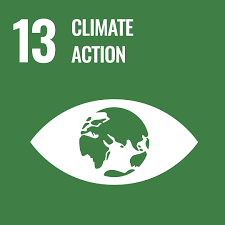“`html
The United Nations Sustainable Development Goals (SDGs)
The United Nations Sustainable Development Goals, also known as the Global Goals, are a universal call to action to end poverty, protect the planet, and ensure that all people enjoy peace and prosperity by 2030. Adopted by all United Nations Member States in 2015 as part of the 2030 Agenda for Sustainable Development, these goals address a wide range of global challenges.
Key Objectives of the SDGs
There are 17 Sustainable Development Goals that cover various aspects of social, economic, and environmental development. Some of the key objectives include:
- No Poverty
- Zero Hunger
- Good Health and Well-being
- Quality Education
- Gender Equality
- Clean Water and Sanitation
- Affordable and Clean Energy
- Decent Work and Economic Growth
- Industry, Innovation, and Infrastructure
- Reduced Inequality
- Sustainable Cities and Communities
- Responsible Consumption and Production
- Climate Action
- Life Below Water
- Life on Land
- Peace, Justice, and Strong Institutions
A Call for Global Collaboration
Achieving the SDGs requires collaboration among governments, businesses, civil society organizations, and individuals worldwide. By working together towards these common goals, we can create a more sustainable and equitable future for all.
”
“`
Understanding the UN Sustainable Development Goals: Key Questions and Their Significance
- What are the 17 SDGs and their meaning essay?
- What are the 17 SDGs of UN?
- What does UN SDG do?
- What are the five pillars that the UN SDGs?
- Why is UN SDG important?
What are the 17 SDGs and their meaning essay?
The 17 Sustainable Development Goals (SDGs) set by the United Nations are a comprehensive framework aimed at addressing global challenges and improving the well-being of people and the planet by 2030. Each goal has specific targets to achieve, ranging from eradicating poverty and hunger to promoting quality education, gender equality, clean energy, sustainable cities, climate action, and more. These goals emphasize the interconnectedness of social, economic, and environmental issues, highlighting the need for holistic approaches to development. By working towards these SDGs collectively, countries can make significant progress in creating a more sustainable and inclusive world for current and future generations.
What are the 17 SDGs of UN?
The 17 Sustainable Development Goals (SDGs) established by the United Nations are a set of ambitious objectives aimed at addressing global challenges and improving the well-being of people and the planet by 2030. These goals cover a wide range of areas, including eradicating poverty, ensuring access to quality education and healthcare, promoting gender equality, fostering sustainable economic growth, combating climate change, and building strong institutions for peace and justice. Each SDG plays a crucial role in advancing sustainable development worldwide and requires collective action from governments, organizations, and individuals to achieve meaningful progress towards a more equitable and sustainable future.
What does UN SDG do?
The United Nations Sustainable Development Goals (SDGs) serve as a blueprint for global action to address pressing challenges such as poverty, inequality, climate change, and environmental degradation. The SDGs provide a framework for countries, organizations, and individuals to work towards a more sustainable and equitable world by 2030. They guide efforts to improve access to education, healthcare, clean water, and energy while promoting economic growth and environmental conservation. Through partnerships and collaboration at local, national, and international levels, the UN SDGs aim to create positive change and ensure a better future for all.
What are the five pillars that the UN SDGs?
The United Nations Sustainable Development Goals (SDGs) are built upon five key pillars that serve as the foundation for achieving sustainable development worldwide. These pillars encompass various dimensions of well-being and progress, including economic growth, social inclusion, environmental sustainability, peace and security, and partnerships for development. By addressing these pillars collectively, the SDGs aim to create a more equitable and prosperous future for all people while safeguarding the planet for future generations.
Why is UN SDG important?
“`html
The United Nations Sustainable Development Goals (SDGs) are crucial for addressing pressing global issues and creating a more sustainable future for all. These goals serve as a roadmap for countries and stakeholders to work together towards ending poverty, protecting the planet, and ensuring prosperity for everyone. By focusing on key areas such as education, health, gender equality, climate action, and more, the SDGs provide a framework for tackling interconnected challenges that affect people worldwide. Achieving the SDGs is essential for promoting social inclusion, economic growth, environmental sustainability, and building a more equitable world for current and future generations.
“`

